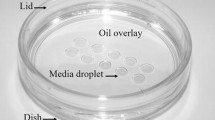Abstract
To reduce dependence on electric-powered incubators, a number of alternate heat sources have been proposed. Phase change materials (PCM) are one of such because of their availability and cost effectiveness in rural areas. This study intends to explore the use of phase change material (PCM) such as paraffin wax as an alternative heat source over a variety of incubator hood geometries. This study presents three incubator hood geometries and their respective effects on maximum hood temperatures and time to reach these temperatures for a mainstream incubator. The three designs, cubic, pyramidal, and oval, were created using CAD software; mathematical computations for heat transfer analysis were undertaken using COMSOL Multiphysics software. Results show the maximum temperatures reached in the hoods were 308, 314.5, and 315 K for the cubic, pyramidal, and oval-shaped geometries respectively. This offers a promising application of PCM-based as a choice material for incubator design for rural applications.






Similar content being viewed by others
References
UNICEF 2014. www.unicef.org/mdg/index_unicefsrole.htm
Ghana, A.M., Al-Abide, K.M. (2005) Novel Technique to Control the Premature Infant Incubator System using ANN. Third International Conference on Systems, Signals & Devices March 21-24, Sousse, Tunisia.
Costa, E.J.L., Frere, R.C.S., Silva, J.B.A., Cursing, C.M.P., et al. (2009) Humidity Control System in New-born Incubator. XIX IMEKO World Congress Fundamental and Applied Metrology September 6−11, 2009 Lisbon, Portugal.
Ajani OA, Osunbitan JA, Asaolu OA (1997) Development and Performance Evaluation of a Kerosene Fuelled Incubator. Ife Journal of Agriculture 19 (1&2):10-15.
Adewumi AA, Ayodele IA, Lameed GA (2008) The effect of Incubator type on hatchability and Chick Survival of emu Dromaius Novae Hollandie (Le Souef 1907). Journal of Applied Science and Environmental Management 12 (2): 13-15.
Fabiola SS, Afolabi AO, Dosunmu OJ (2008) Hatchability of Chicken Eggs as Influenced by Turning Frequency in Hurricane Lantern Incubator. African Journal of Biotechnology 7 (23): 4310-4313.
Irtwange SV (2003) Passive Solar poultry Eggs Incubator: Development and Preliminary Performance Evaluation. Journal of Applied Science and Engineering Technology 3 (2): 30-36.
Ogunwande GA, Akinola EO, Lana AR (2015) Development of a Biogas-Powered Egg Incubator. Ife Journal of Science 17(1):219-228.
Sreenath SN, Kumar S, Lohit HS (2012) Design of an Infant Incubator for Cost Reduction and Improved Usability for Indian Health Care Centres. SASTECH Journal 11(2):82-89.
Somsri, D., Chuaychunu, N., Meechai, L., Pintavirooj, C. (2008) Analysis and Comparison of a Customize Infant Incubator Camber Sap Using Finite Element Method. IEEE 2008 International Symposium on Communications and Information Technologies (ISCIT) - Vientiane, Laos (2008.10.21-2008.10.23)]. doi: https://doi.org/10.1109/ISCIT.2008.4700209.
Chuaychunu, N., Lohakan, M., Pintavirooj, C., Choomchuay, S. (2008) Analysis and Comparison of a Customize Infant Incubator Incubator Chamber using Finite Element Method The 3rd International Symposium on Biomedical Engineering (ISBME 2008).
Prasanga, D., Lokuge, H., Maguire, Y., Wu, A. Design of a Passive Incubator for Premature Infants in the Developing World “development by design” (dyd02), Bangalore © Copyright 2002 Think Cycle.
Ginalski MK, Nowak AJ, Wrobel LC (2007) A Combined Study of Heat and Mass Transfer in a double m –walled infant incubator. Med.Eng.Phys. 29,531541. https://doi.org/10.1016/j.medengphy.006.07.011.
Elabbassi EB, Belghazi K, Delanaud S, Libert JP (2004) Dry Heat Loss in Incubator: Comparison of Two Premature New Born-sized Manikins. Eur. J. Appl. Physiol. 92,679 (doi:https://doi.org/10.1007/s00421-004-1130-5).
Brück K (1961) Temperature Regulation in the New Born. Biol.Neonate 3:65-119. (doi:https://doi.org/10.1159/000239810).
Rennie JM, Roberton NRC (2002) A Manual of Neonatal Intensive Care. New York: Oxford University Press.
Abdulraham RS, Ibrahim FA, Dakhil SF (2019) Development of paraffin wax as phase change material based latent heat storage in heat exchanger. Applied Thermal Engineering 150:193-199.
Tran K, Gibson A, Wong D, et al. (2014) Designing a Low-Cost Multifunctional Infant Incubator. Journal of Laboratory Automation 6(1):1-7.
Sharma O, Lewis SN, Telang U, D’Almeida L, Lewis LE (2017) Design of a Bluetooth Enabled Health Monitoring System for Infants Using Wearable Technology. Jour of Adv Research in Dynamical & Control Systems 15: 887-894.
Acknowledgments
The project described in this article was supported by Fogarty International Centre with award number 1D43TW009374 (Northwestern University Framework Programs for Global Health Innovation) from the Fogarty International Centre. The content is solely the responsibility of the authors and does not necessarily represent the official views of the Fogarty International Centre or the National Institutes of Health.
Author information
Authors and Affiliations
Corresponding author
Additional information
Publisher’s Note
Springer Nature remains neutral with regard to jurisdictional claims in published maps and institutional affiliations.
This article is part of the Topical Collection on Patient Facing Systems
Rights and permissions
About this article
Cite this article
Ige, E.O., Dare, A.A., Adeniyi, K.A. et al. Suitability of Hood Geometry for Design of a PCM Neonate Incubator for Resource-Limited Clinical Applications. J Med Syst 45, 32 (2021). https://doi.org/10.1007/s10916-021-01716-9
Received:
Accepted:
Published:
DOI: https://doi.org/10.1007/s10916-021-01716-9




